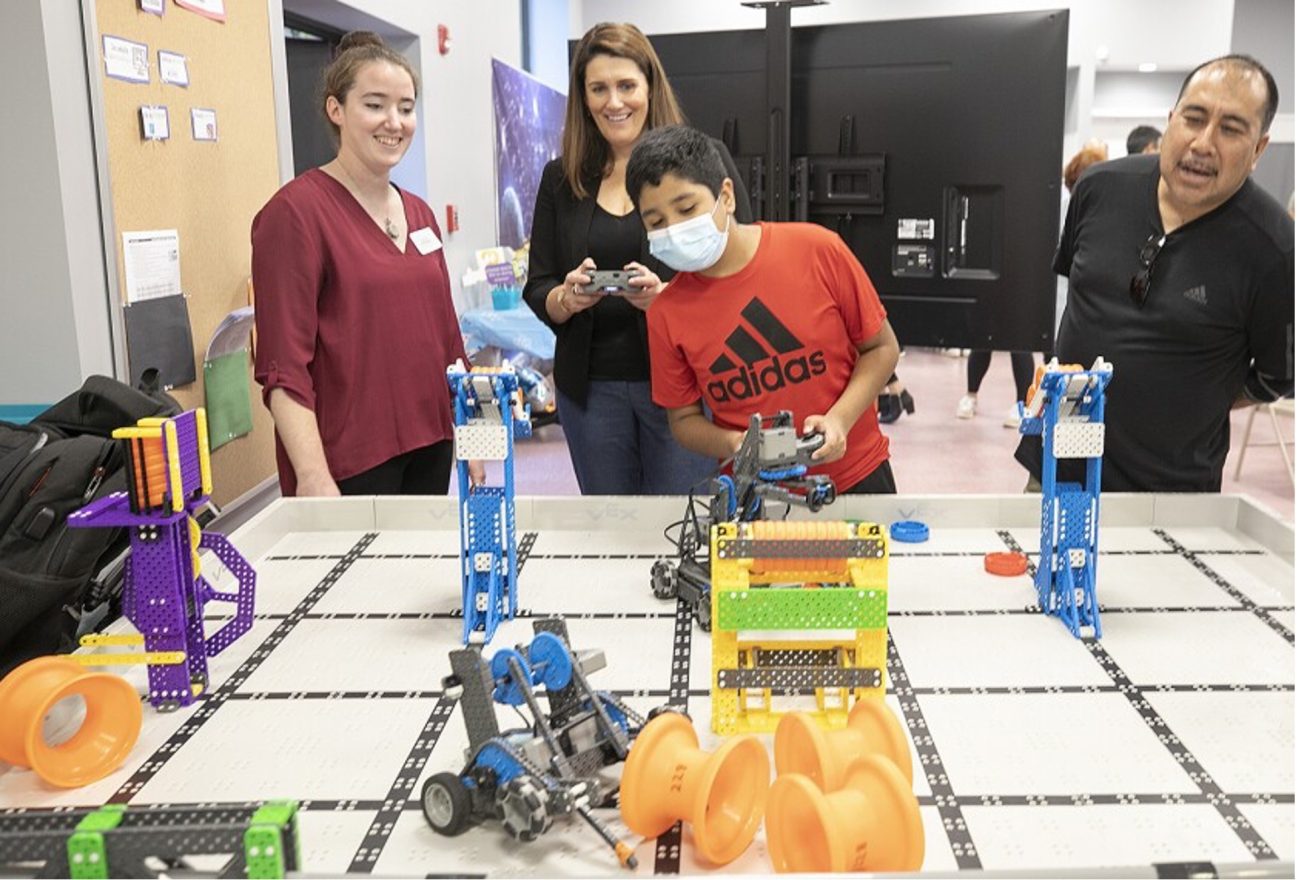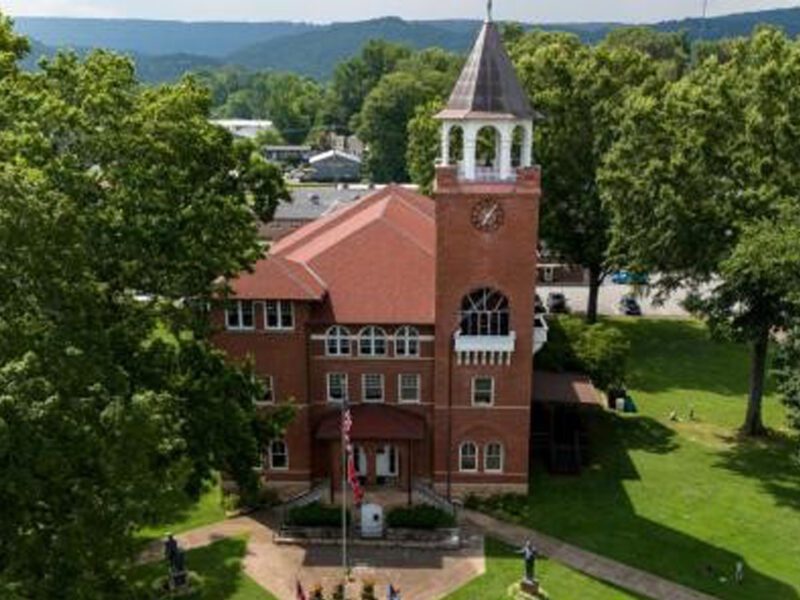
The Biden Administration’s New STEM Initiative: What Will It Mean for K-12 Schools?
EdWeek | By Libby Stanford | December 12, 2022
A new Biden administration initiative aims to expand access to science, technology, engineering, math, and medical career fields through partnerships with universities, STEM companies, and nonprofit organizations.
The White House announced a new “STEMM” (adding an extra M to the well-known acronym to include medical fields) national vision and strategy during the Dec. 12 Summit on STEMM Equity and Excellence. The initiative outlines five action items that the government and its industry and education partners will take to improve STEMM equity and access across the country and involves over $1.2 billion in work and investments from the federal government, industry leaders, and nonprofit organizations, according to a fact sheet.
“The time has come to work boldly, with urgency, together to open the doors of opportunity across these five action areas,” Alondra Nelson, the principal deputy director for science and society at the White House’s office of science and technology policy, said during the summit.
The five action items the federal government plans to put in place include:
- Provide holistic and lifelong support for students, teachers, workers, and communities to participate in, and contribute to, science and technology;
- Address STEMM teacher shortages by recruiting and retaining teachers and improving teacher respect;
- Close STEMM funding gaps and support students, researchers, and communities that have historically been excluded from access to STEMM resources;
- Root out systemic bias, inaccessibility, discrimination, and harassment in classrooms, laboratories, and workplaces;
- And promote culture and systems of accountability across science and technology communities, workplaces, and education fields.
The idea is that the action items will provide students from all backgrounds with the opportunities they need to access and excel in STEMM fields. For the STEMM workforce to reflect societal demographics by 2030, the number of women in those jobs would need to double, the number of Black people would need to more than double, and the number of Hispanic people would need to triple, according to a report from the National Science Foundation.
“People talk about those [people] as the missing millions, the people who have these enormous contributions to make but who can’t yet find pathways into STEMM jobs,” said Arati Prabhakar, the chief adviser to the president for science and technology and the director of the office of science and technology policy.
Federal and private partnerships to expand opportunities in high-needs communities
Within each of the five action areas identified through the initiative are specific programs and steps the federal government and industry leaders are taking to improve STEMM opportunities.
The White House highlighted federal programs with the U.S. Patent and Trade Office, NASA, and the National Science Foundation to fund and provide work-based and hands-on learning opportunities for students from high-needs areas and varying backgrounds.
The U.S. Department of Education also plans to focus on recruiting teachers and training teachers in STEMM, while also developing equitable pathways for careers for students, said Joaquin Tamayo, the chief of staff for the department’s deputy secretary, Cindy Marten. The department wants all students to feel that they belong in STEMM classrooms and careers, he said.
“We’re experiencing right now, particularly as we come out of the pandemic, a crisis of belonging in this country, a crisis of belonging in our classrooms, a crisis of belonging among our educators, and it’s having a serious impact,” Tamayo said.
As for private-sector work, the American Association for the Advancement of Science is partnering with the Doris Duke Charitable Foundation to bring together more than 90 companies and organizations involved in the STEMM field to be a part of the STEMM Opportunity Alliance.
The alliance will work to achieve STEMM equity and excellence across the White House’s five identified action areas by 2050. So far, the philanthropic organizations involved in the alliance have donated $4 million to its work.
Each of the 90 companies and organizations has committed to specific actions to improve STEMM equity. For example, Micron, a semiconductor, memory, and storage manufacturer, and the National Science Foundation plan to invest $10 million to accelerate training of new STEMM teachers, support the retention of existing STEMM educators, and advance diversity and equity in the STEMM teacher workforce.
“We’ve got to make sure that our educator pipeline looks like the STEMM pipeline that we’re trying to create,” said April Arnzen, Micron’s senior vice president and chief people officer.
Removing systemic barriers to participation is critical
During the summit, Zach Oxendine, an engineer at Microsoft, shared how his experience navigating the school system and pursuing a career in the technology field was anything but simple.
Oxendine, originally from Rock Hill, S.C., is a member of the Lumbee Native American tribe and the son of deaf parents, who divorced when he was in elementary school. Though he always showed talent in school, he struggled to find people who believed in him.
“I often found myself in trouble at school,” Oxendine said. “And although I was deemed a bright kid by test scores and honors classes, my grades did not reflect that potential. For me, school was not a place where I always felt like I could be empowered to be my authentic self.”
Oxendine described how he faced setbacks when his family couldn’t afford the cost for him to participate in his school’s talent-identification program for students with high standardized-test scores, and he struggled to figure out how to pay for college or even envision himself in a college setting. So Oxendine joined the U.S. Air Force, where he discovered the field of technology and pursued a college degree and, later, his career in IT and engineering, eventually landing at Microsoft.
Oxendine created his own STEM youth camp for Native American students in the Southeast, specifically students who are members of the Lumbee and Catawba tribes. In his speech at the summit, Oxendine said the White House’s initiative is an important step forward for equity in STEMM and urged national and industry leaders to take the same initiative to remove barriers to STEMM fields and education.
“You see too many kids like me,” he said. “They don’t have the opportunity or the supports to access or thrive in STEMM, and STEMM pathways are far too often blocked for too many of America’s youth.”





